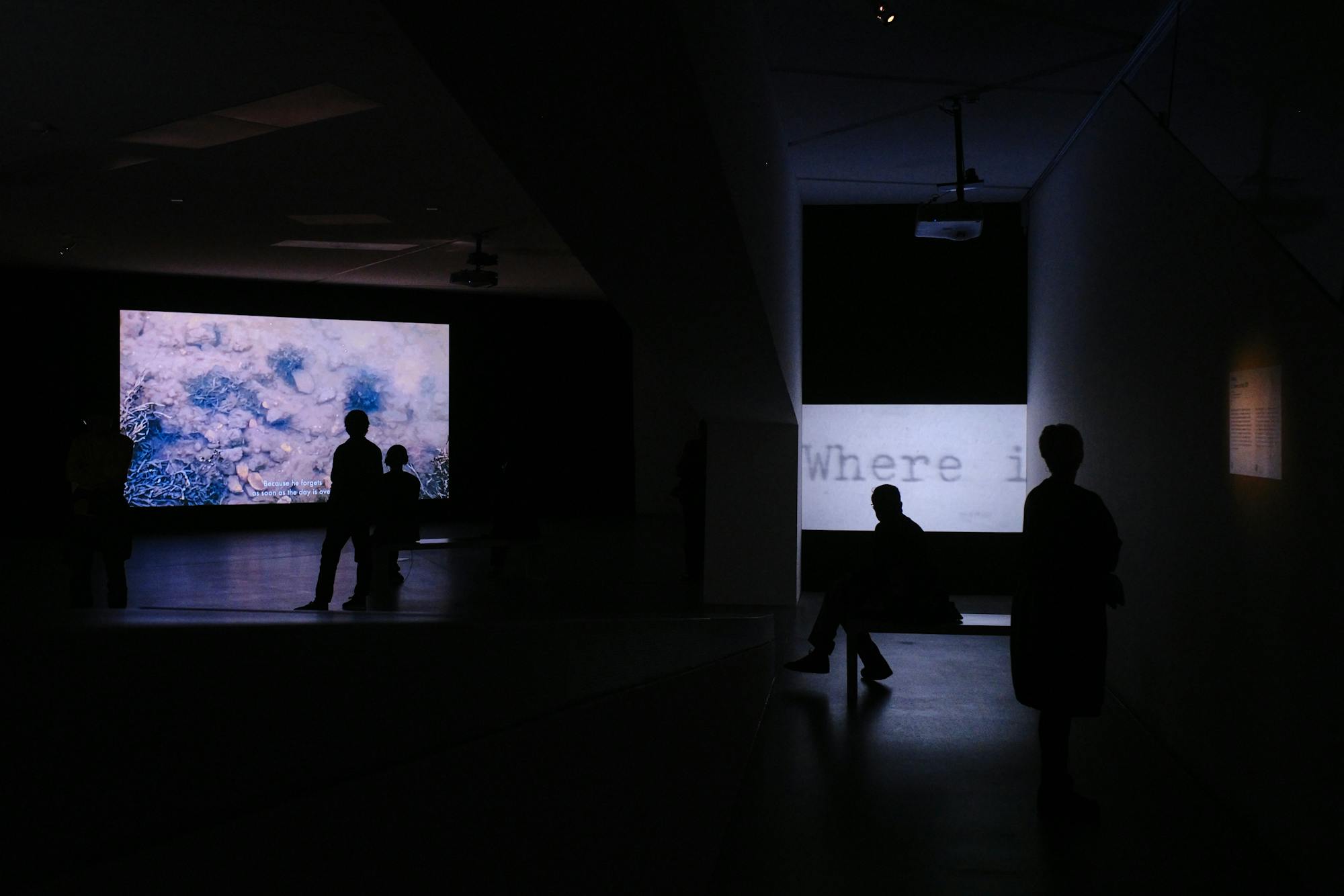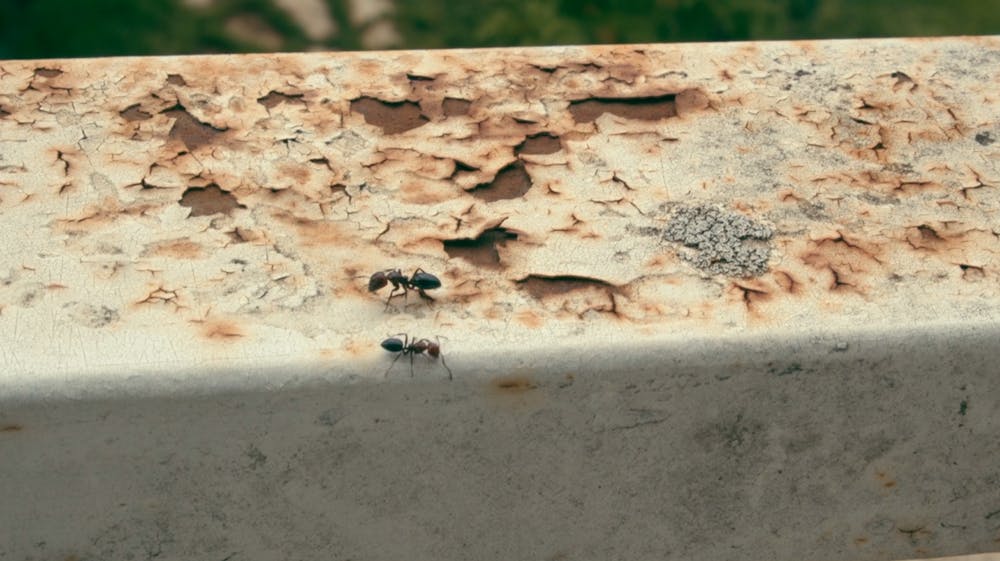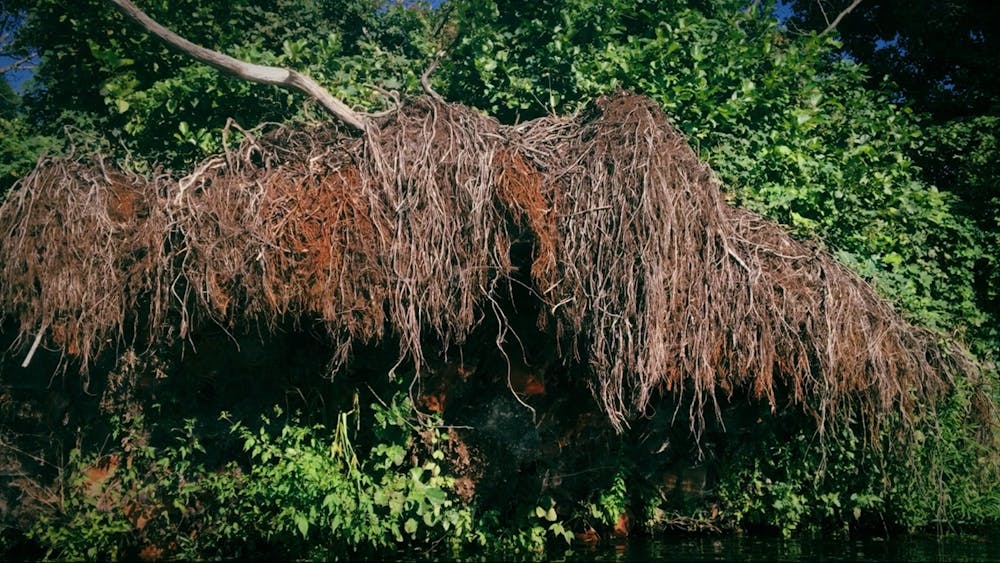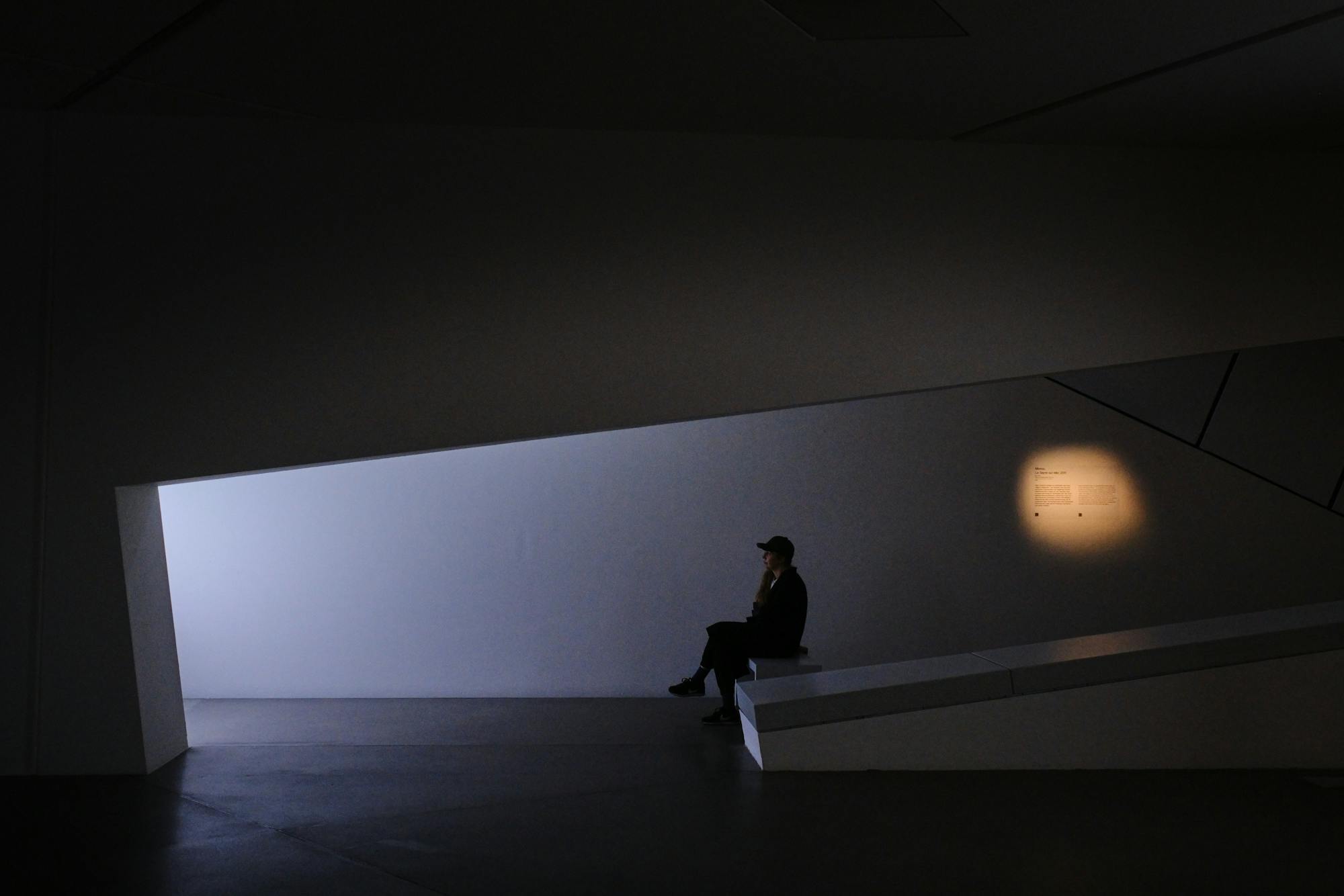A conversation with artist and filmmaker Maya Schweizer, winner of the 2023 Dagesh art prize, about the major themes of her work and her film Sans histoire, supported by Kemmler Foundation and part of an eponymous exhibition at Jüdisches Museum Berlin.

My work revolves around questions of history, identity, and memory.
Maya, what can you tell us about your evolution as an artist?
I studied art and art history at the faculty of Aix-en-Provence in France. At that time, I was more inclined towards photography and collage, which led me to enroll at the Leipzig School of Art. In Leipzig, I became interested in mixed media and I switched to Alba d'Urbano's class and started to work with video. I graduated as Meisterschüer in the class of Lothar Baumgarten at the Berlin University of the Arts (UdK).
My work revolves around questions of history, identity, and memory. Urban Spaces are often the starting point for my observations. In my perception of these spaces as individual and collective modes of action, I discover social realities, inscribed narratives and overlapping histories.
Can you give an example?
One of the double screen videos I made in 2010, Au dos de la carte postale (On the Back of the Postcard, 2010, 15min), shows a scene that, at first glance, seems banal. At the foot of the Eiffel Tower, street vendors are selling cheap metal miniature Eiffel towers. A crowd of people crosses the frame, coming and going from the real tower. Tourists take pictures and examine the merchandise. An absurd spectacle then unfolds: the vendors quickly pick up their goods and run away, pursued by a police bike patrol, before eventually returning to their seats and starting again. The policemen repeat this cycle of surveillance several times a day. It’s a kind of banal ritual. In this film, it was necessary, in addition to this daily hunt, as Laliv Melamed writes, "to excavate the irony that connects the layers of memories, histories and politics in this space.”¹
The video thus combines scenes of contemporary daily life in Paris with a critical reflection on the history of human zoos. That is to say, the history of the Parisian monument at the time of the 1889 World's Fair, for which the Eiffel Tower was erected and during which the organizers also recreated street scenes from Cairo and African villages.

How do you engage with time and locality through the medium of film?
What appeals to me about film as a medium is the fact that it can revolve around memory in a temporal movement through space. It can recontextualize the memorial in the present, in the here and now, the monument is surrounded by the inhabitants of the city and everyday life: images of living history, of people's daily negotiations with its architecture, moving through it, listening to the sounds that reverberate off its surfaces and constructing an environmental flow through the space.
I usually start by investigating a place, then it’s background and a particular aspect of that backstory which inspires me to explore it through personal associations and memories. Memorials and modes of memory are a recurring interest of mine. Manou, La Seyne sur Mer (2011, 9 min) is a very short experimental video essay about the idea of materialisation of memory, taking as a topic an episode in the life of my grandmother. It was an attempt to make a sort of film-memorial to materialise her memory and make her story "visible" and tangible.






What appeals to me about film as a medium is the fact that it can revolve around memory in a temporal movement through space.
Do you also encounter resistance in making these places of memory speak?
When I made the film, Le soldat mourant des Milles, (The Dying Soldier of Les Milles, 2014, 13 min), I was not allowed to film in and around the memorial. Ironically, that's when I had the strongest experience, where space and time mixed the most. Thanks to the constraint of not being able to film at the place of remembrance, I had to improvise and I realized that the names of the streets in the village of Les Milles, all around the place of remembrance, were references to the period of the Second World War.
In addition to these streets that seem to be from the past, in the central square of the village, which is also the petanque court, there is a statue of a soldier standing, dying, leaning on bags of ammunition, which is supposed to represent the first and second world wars as well as the Algerian war.
Where I present this work in the exhibition space, I cover the floor with sand in front of the projection and place a petanque ball from 1918, which remains on the floor as if it had been forgotten.
Both your newest film and your exhibition at the Jewish Museum are titled „Sans histoire“? How can one think of memory without history?
I have often worked on the fragility of memory and forgetting, on the flaws of memory, its partiality, its hesitations, its doubts and its subjectivity in relation to history. Sans histoire, a title that evokes, among other things, the absence of narration, is a film of associations, a sort of search for hints of the future in everyday life. The film begins in the night, evoking dreams and drowsiness. We progress through a landscape of furtive associations that lead us to the notions of memory, memory of the future, and fear ... The film Sans histoire deals with the fact that we need our memory to project ourselves into the future but that we try to detach ourselves from it to create a future. It oscillates between a desire for utopia and the fear of a possible dystopia; navigating trans- and posthuman scenarios.


How would you describe the specific constellation of your works in the exhibition for the Dagesh-Prize at the Jewish Museum?
The four works selected for the Sans Histoire exhibition have been placed together in the room, with the purpose to align the projections with the architectural lines of the Museum’s Libeskind building.
Upon entering the Ross Gallery, the first screen encountered by the visitors plays L ́étoile de mer (Starfish, 2019, 11 min). The film is an experimental navigation of the Mediterranean, mixing underwater shots, silent films, my video archives, fade-in texts and sound collage. This essay of images and sounds deals with oblivion and the sea as a point of reference and reflection. The sea is a fluid immaterial space and therefore seems to be conducive to forgetting.
We drift again to the right and find ourselves looking down a hallway at film Manou, La Seyne sur Mer, 2011 (2012, 9 min.), which we added at the suggestion of curator Shelley Harten. This film is an attempt to archive a stream of consciousness, tracing the thoughts of my grandmother as I asked her if she had any friends at the retirement home she had been living in for about a year. This video has another formal editing. We find ourselves reading a text that was once typed on paper, transferred to an overhead transparency and projected onto a wall, in order to be filmed by a camera, in a very subjective way. This film Speaks of a desire to archive a very natural and personal testimony and the peril of oblivion.
On the back of L'étoile de mer, we will see Voices and Shells (2020, 18 min). The film is a collage: it mixes traces of history and forms of nature, putting voices and sounds from different sources on the same level. It opens in the dark, in a corridor; water flows... – Voices resound in these sewer tunnels; it is the abyss of Munich, under the river Isar. The voices tell fragments of stories: missing people, violence, loss of memory - while the camera is now above the ground, scanning the city's facades, including those of the "Third Reich". The city appears as a body that snakes through time, past and present.
The central film of the exhibition, Sans histoire, is placed on the largest wall of the space. The editing is strongly inspired by the automatic writing system used by Surrealist writers but with image associations. It links the threatening reality of catastrophes to our fragile unconscious. The film - composed of short fragments of everyday life – becomes a cinematic landscape. The viewer is wandering in between a possible dystopia that is neither inside nor outside, but passes between and through us - and the anticipation of utopia. The film is a metaphor, a challenge, a questioning of the relationship between mental and cinematic images.
It is emblematic of the way I work that – excecept for placing L’étoile de mer at the beginning – the order of the films is not as important, because visitors exit through the entrance, even when they actually intend to visit Kadishman's installation Shalechet within Libeskind’s Memory Void. Returning from the void, visitors may see the films in the opposite order, starting with Sans histoire. The room seems to offer a place to think and oscillates between the notions of memory and oblivion.
1 Laliv Melamed : Everyday Souvenirs [On the Work of Maya Schweizer], Essay written on the occasion of her Profile - at Internationale Kurzfilmtage Oberhausen, 2020